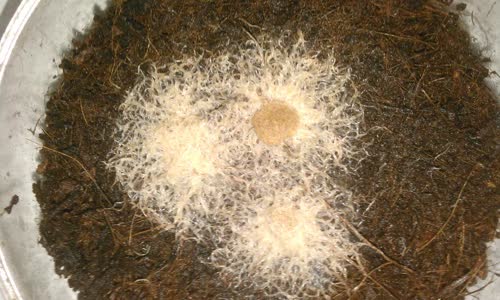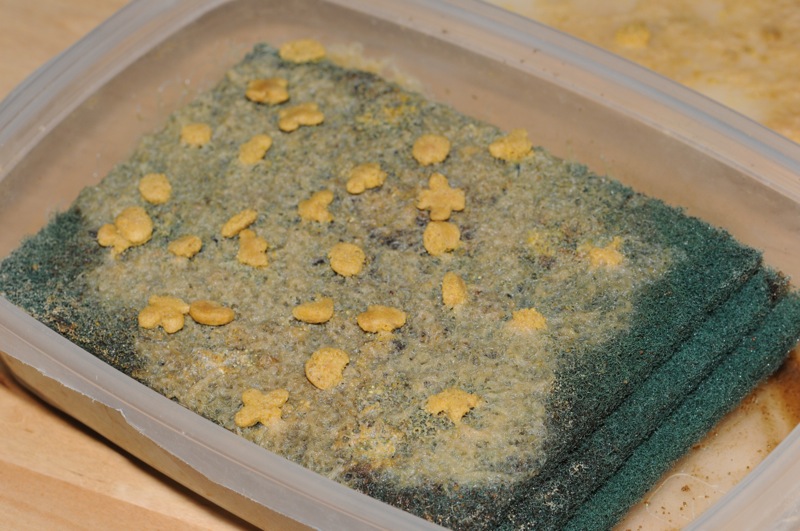
Grindal worms are fairly easy to culture. They're about half an inch long and thinner then a pencil lead; they're slightly less fatty than white worms and thus may be fed more often, say, every other day. As a conditioning food for breeding they may be fed daily.
They are comfortable at 70 F / 20 C to 80 F / 25 C; at lower temperatures they will stop reproducing, but not die. They do not seem bothered by higher temperatures for periods of time.
They are cultured in mix of half potting soil half peat moss in a shoe-box sized container with a lid that's fairly tight fitting to prevent loss of moisture through evaporation, but not tight enough so they'll be deprived of oxygen.
The medium should be fairly moist. There should not but puddles on the surface but if you stick your hand it it should come out wet covered with "mud". Grindal worms seem to like it a bit more moist than white worms; the soil should be wet.
The best thing to feed them is high protein baby cereal although any cereal can be used "in a pinch". They can also be fed bread soaked in milk although this tends to make them more fatty and is too much food for all but the largest culture.
On top of the culture place a piece of clear glass about 1/3 the size of the surface are, the worms will congregate under that and can be removed from here with your finger and dipped into a tank. place the food under the glass, this encourages them to congregate there to a greater extent.
There are a couple of things that can go wrong with a grindal culture, some serious, some not. First there is a small fly that always seemed to inhabit the culture. They are not harmful in the slightest, don't seem to exist outside the culture and are more annoying than dangerous. I've never seen a culture without them. Perhaps if you really wanted a culture without these flies you'd sterilize the soil and rinse a small number of worms thoroughly and inoculate the media with them. It's worth a try I suppose, but I've never bothered.
They also suffer if given too much food or too much water. If they are over-fed, the culture will go rancid and you'll know immediately because of the smell. The best thing to do is work in a bit of moist, but fairly dry peat moss, close the lid, cross your fingers and hope for the best. In a week or two it might be ok - or all the worms will be dead. Most poeple have more than one culture going at a time and it seldom happens to more than one at a time.
If the media is too wet (you may have to add water from time to time to keep it moist, replacing water lost from evaporation) the worms will crawl up the sides of the container. Add more soil/peat until it's the right consistency and they should be ok. This isn't a serious problem as over-feeding.
I've found the size of the container is fairly critical - all attempts I've made to use a large container have failed. Perhaps this is a question of population density - if there are too few worms for a container that size they can't find food. I suspect that if a large actively growing culture is placed gradually into successively larger containers that might work, but I've certainly never had luck starting a large culture with a small inoculation of worms.

